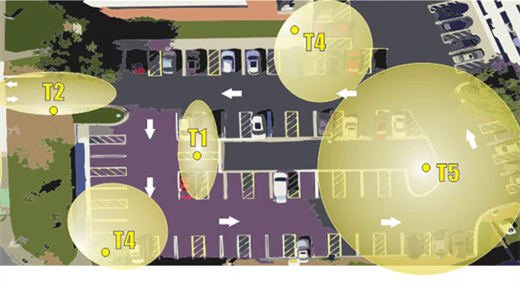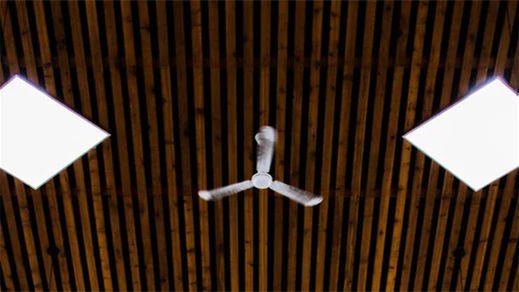Lighting is a crucial aspect of design in both indoor and outdoor spaces, influencing visibility, safety, aesthetics, and energy efficiency. To achieve optimal lighting, it’s essential to understand light distribution patterns, which describe how light is dispersed from a fixture. These patterns are categorized into several types: Type I, Type II, Type III, Type IV, and Type V. Each type serves different applications and has unique characteristics that make it suitable for specific environments. This guide will delve into each distribution type, providing a clear understanding of their applications and benefits.
Type I Light Distribution
Characteristics
Type I light distribution is a two-way lateral distribution. It produces a long, narrow, oval-shaped light pattern, making it ideal for illuminating sidewalks, paths, and narrow walkways. The light spread is symmetrical and covers a distance approximately equal to the height of the fixture.
Applications
Type I distribution is best suited for narrow pathways where the width of the area to be illuminated is limited. This includes:
- Sidewalks
- Narrow streets
- Pedestrian pathways
- Small parking lots
Benefits
- Efficient use of light along narrow spaces
- Minimizes light spillage beyond the intended area
- Enhances safety by providing consistent illumination along the path
Type II Light Distribution
Characteristics
Type II distribution casts a slightly wider light pattern compared to Type I, typically covering a width of about 1.5 times the height of the fixture. This pattern is suitable for wider walkways and narrower roadways.
Applications
Type II is commonly used in:
- Wider sidewalks
- Long, narrow roadways
- Narrow parking areas
- Entrance roadways
Benefits
- Broader coverage for wider paths and roadways
- Improved visibility for both pedestrians and drivers
- Effective for lighting areas that require extended lateral illumination
Type III Light Distribution
Characteristics
Type III distribution provides an even broader light spread, with the illumination pattern extending outwards and creating a more substantial forward throw. It covers an area approximately 2.75 times the height of the fixture.
Applications
Type III is well-suited for:
- Roadways
- Large parking lots
- Perimeter lighting
- Wide walkways
Benefits
- Extensive lateral and forward coverage
- Ideal for large areas where uniform illumination is necessary
- Enhances security and visibility in wide spaces
Type IV Light Distribution
Characteristics
Type IV, or forward throw distribution, focuses light in a semicircular pattern, projecting light further forward with minimal backlight. This pattern is ideal for applications that require light to be thrown forward without much lateral spread.
Applications
Type IV distribution is perfect for:
- Building facades
- Perimeter lighting
- Parking lot perimeters
- Sports fields and courts
Benefits
- Maximizes forward illumination while minimizing backlight
- Suitable for illuminating specific areas or boundaries
- Reduces light pollution and spillage
Type V Light Distribution
Characteristics
Type V distribution offers a circular, symmetrical light pattern that is equally distributed in all directions. This type of distribution ensures uniform illumination around the fixture, covering an area of approximately 5.5 times the height of the fixture.
Applications
Type V is ideal for:
- Large parking lots
- Intersections
- Open areas
- Roundabouts
Benefits
- Uniform 360-degree illumination
- Eliminates dark spots and ensures consistent lighting
- Optimal for open areas requiring comprehensive coverage
Choosing the Right Light Distribution
Selecting the appropriate light distribution type is crucial for achieving the desired lighting effects and efficiency. Here are some factors to consider when choosing the right distribution type:

Purpose and Environment
- Sidewalks and Narrow Paths: Type I or II
- Roadways and Wide Paths: Type III
- Perimeter Lighting and Building Facades: Type IV
- Open Areas and Parking Lots: Type V
Fixture Height
The height of the light fixture significantly influences the effectiveness of the distribution pattern. Ensure that the chosen distribution type complements the height and intended coverage area.
Light Spillage and Pollution
Consider the potential for light spillage and pollution. Type IV, with its forward throw pattern, is excellent for minimizing backlight and reducing unwanted light spill.
Energy Efficiency
Efficient light distribution reduces the need for excessive fixtures and energy consumption. Uniform illumination patterns like Type V can cover large areas with fewer fixtures, enhancing energy efficiency.
Safety and Visibility
Proper light distribution enhances safety and visibility, which is especially important in areas with vehicular and pedestrian traffic. Ensuring the chosen distribution type aligns with safety requirements is paramount.
Conclusion
Understanding light distribution types—Type I, II, III, IV, and V—is essential for designing effective and efficient lighting systems. Each type offers distinct characteristics and benefits, making them suitable for specific applications. By carefully selecting the appropriate light distribution pattern based on the environment, fixture height, and desired coverage, you can optimize illumination, improve safety, and achieve energy efficiency. Whether it’s illuminating a narrow pathway, a wide roadway, a building facade, or an expansive parking lot, the right light distribution type will ensure your lighting design meets its intended goals.


































Leave a comment
This site is protected by hCaptcha and the hCaptcha Privacy Policy and Terms of Service apply.